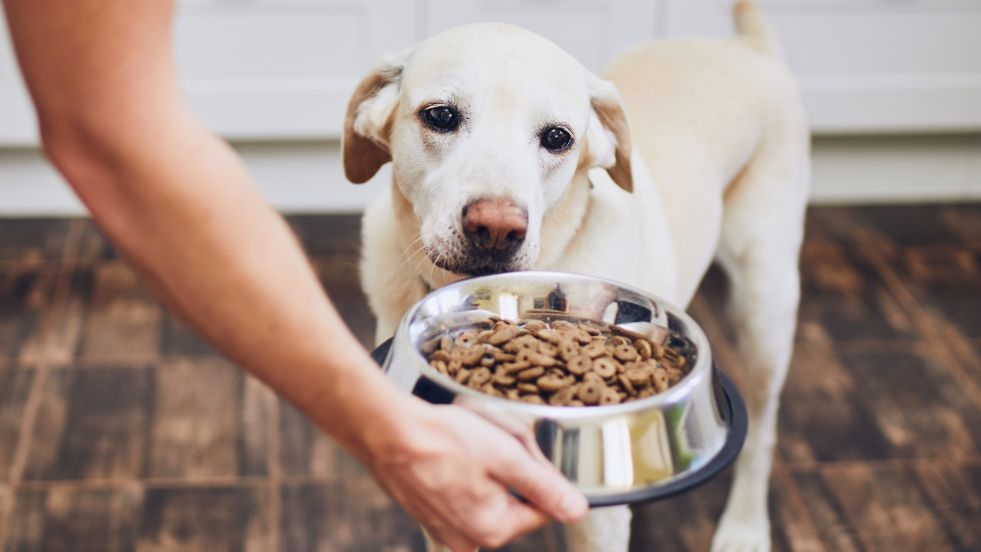One of the most common questions pet parents face is whether dry dog food (kibble) or wet dog food (canned) is the better choice for their pet. With pet food aisles packed with options, it’s easy to feel overwhelmed. Both types have unique advantages, and the right choice often depends on your dog’s age, health, and lifestyle. In this guide, we’ll explore the differences, benefits, and veterinarian recommendations to help you make the best decision for your furry companion.
Breaking It Down: Dry vs. Wet Dog Food
At first glance, dry and wet foods may just look different in texture and packaging—but the differences go deeper.
Dry dog food (kibble): Made by extruding ingredients into bite-sized pieces, kibble is low in moisture (around 10%) and has a crunchy texture. It’s shelf-stable, easy to store, and often more budget-friendly.
Wet dog food (canned or pouch): Contains a significantly higher water content (approximately 70–80%), resulting in a moist, palatable texture. It usually comes in sealed cans or trays, making it appealing for picky eaters or dogs who need more hydration.
Dry Dog Food vs. Wet Dog Food: Quick Comparison
| Factor | Dry Dog Food (Kibble) | Wet Dog Food (Canned) |
| Moisture Content | Low (~10%) | High (70–80%) |
| Shelf Life | Long, easy to store | Short once opened (2–3 days refrigerated) |
| Cost | More budget-friendly | Typically more expensive |
| Convenience | Easy to portion, store, and feed | Less convenient; needs refrigeration after opening |
| Palatability | It may be less appealing to picky eaters | Highly palatable, stronger aroma and taste |
| Dental Benefits | Crunch may help reduce tartar (not a substitute for brushing) | No dental cleaning effect |
| Hydration | Provides little water | Helps with hydration and urinary health |
| Best For | Active adult dogs, cost-conscious owners, and dogs with healthy teeth | Picky eaters, puppies, seniors, or dogs with dental or urinary issues |
Which One Wins? Choosing Between Wet and Dry
There’s no universal answer to whether wet or dry food is “better.” Instead, the right choice depends on your dog’s age, health status, dental condition, activity level, and preferences. For example:
- Puppies or senior dogs may benefit from wet food’s softer texture.
- Active adult dogs with strong teeth may do well on kibble.
- Dogs prone to urinary issues often thrive on wet food because of its high moisture content.
Veterinarians often recommend looking beyond texture and focusing on the nutritional quality of the food—protein source, fat content, fiber, and added nutrients.
Why Wet Food Can Be a Great Choice
Wet dog food comes with several advantages that make it appealing for certain dogs and owners:
- Hydration Support: Its high water content helps dogs stay hydrated, especially important for those prone to kidney or urinary tract issues.
- Palatability: Dogs with reduced appetite, picky eaters, or senior pets often prefer the taste and smell of wet food.
- Easier to Chew: Softer texture makes it ideal for puppies, senior dogs, or those with dental problems.
- Satiety: The water content can help dogs feel fuller without adding extra calories, useful for weight management.
Scientific insight: A study in the Journal of Veterinary Internal Medicine highlights how increased dietary moisture can aid in urinary health and reduce the risk of bladder stones in dogs (1).
Why Dry Food Still Has the Upper Paw
Kibble remains a popular choice worldwide, and for good reason:
- Convenience: Easy to measure, store, and serve—perfect for busy owners.
- Cost-Effective: Typically more affordable than wet food on a per-serving basis.
- Dental Benefits: While not a replacement for brushing, the crunch of kibble can help reduce plaque and tartar buildup.
- Portion Control: Dry food is easier to portion accurately, reducing the risk of overfeeding.
Scientific backing: Research published in Veterinary Dentistry and Oral Surgery indicates that specially formulated kibble diets can help reduce dental disease in dogs (2)(3).
Veterinarian Picks: Top Wet Dog Food Choices
Veterinarians usually recommend wet dog foods that are nutritionally complete, balanced, and made with high-quality ingredients. Brands like Hill’s Science Diet, Royal Canin, and Purina Pro Plan often come up in vet recommendations because they are backed by clinical research and nutritional testing.
For dogs with specific medical needs, such as kidney disease, prescription wet foods designed to manage these conditions are widely used in veterinary practice.
Veterinarian Picks: Top Dry Dog Food Choices
When it comes to dry food, vets also favor brands with strong nutritional science behind them. Hill’s Science Diet, Royal Canin, and Purina Pro Plan are again frequent recommendations, along with Eukanuba and Iams for certain breeds and life stages.
Vets emphasize looking for foods that are AAFCO-approved (Association of American Feed Control Officials) to ensure they meet the minimum nutritional standards. Specialized kibble formulations also exist for weight control, joint support, and digestive sensitivity.
The Best of Both Worlds: Mixing Wet and Dry Food
Many pet parents wonder if they can combine wet and dry food—and the answer is yes. In fact, mixing can offer the benefits of both:
- Enhanced flavor and texture to satisfy picky eaters
- Added hydration from the wet portion
- Crunch and convenience from the kibble
- Balanced calorie intake when portions are managed carefully
If you decide to mix, consult your veterinarian to ensure the combination still provides a complete and balanced diet without exceeding calorie needs.
What the Research Says About Pet Food Choices
Studies in veterinary nutrition emphasize that the quality of the diet matters more than whether it’s wet or dry. Research published in The Journal of Animal Science shows that protein digestibility, fat balance, and micronutrient levels have a greater impact on long-term health than texture alone (4).
That said, moisture levels in food can influence hydration status, urinary tract health, and overall satiety—factors worth considering for your individual dog.
FAQs About Dry vs. Wet Dog Food
1. Is it okay to switch between wet and dry food?
A. Yes, but make the transition gradually over 7–10 days to avoid digestive upset. Mix small amounts of the new food with the old and slowly increase the ratio.
2. Does wet food spoil faster than dry food?
A. Yes. Once opened, wet food should be refrigerated and used within 2–3 days. Dry kibble can last weeks to months if stored properly in an airtight container.
3. Which is better for weight control—wet or dry?
A. It depends. Wet food can help dogs feel fuller with fewer calories, but kibble makes portion control easier. Work with your vet to create a diet plan tailored to your dog’s weight goals.
Final Thoughts:
The debate between dry and wet dog food doesn’t have a one-size-fits-all answer. Wet food shines for hydration, taste, and ease of chewing, while dry food stands out for convenience, cost, and dental support. The best choice is the one that suits your dog’s age, health, lifestyle, and preferences—and meets complete nutritional standards.
Ultimately, whether you choose kibble, canned, or a mix of both, the most important factor is providing a balanced, high-quality diet. When in doubt, consult your veterinarian—they can help you pick the option that keeps your four-legged friend thriving.
References:
1. Increasing dietary sodium chloride promotes urine dilution
2. Influence of wet and dry commercial diets on the oral microbiota of Yorkshire terriers
3. Influence of Diet on Oral Health in Cats and Dogs
4. Alternative proteins vs animal proteins











